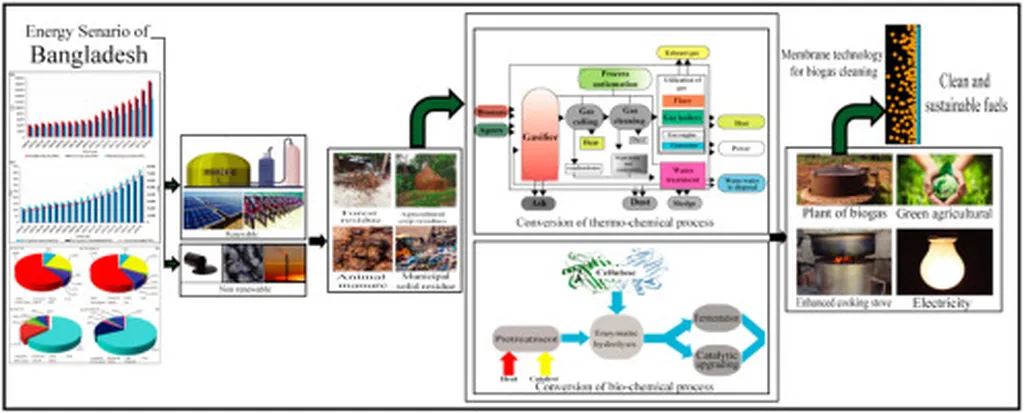In a significant stride towards enhancing material science for energy applications, researchers have developed novel CoFe2O4/Organoclay composites using the sol-gel autocombustion method. This innovative approach, detailed in a recent study published in ‘Results in Materials’ (translated as ‘Results in Materials’), opens new avenues for improving the structural, dielectric, and optical properties of materials critical to the energy sector.
The research, led by M.M. Kamal from the Department of Physical Sciences at Independent University, Bangladesh, focuses on the synthesis and characterization of CoFe2O4 nanoparticles supported by organomodified montmorillonite (ODA-MNT). The study reveals that the addition of ODA-MNT significantly influences the crystallization process and microstructural properties of CoFe2O4.
“Our findings indicate that the crystallite size of CoFe2O4 increases with the addition of ODA-MNT, suggesting that the organoclay plays a crucial role in the crystallization process,” Kamal explained. The Williamson-Hall method was employed to calculate the crystallite sizes, which were found to be 75, 82, 112, and 128 nanometers for 0, 2, 4, and 6 weight percent of ODA-MNT supported compounds, respectively.
The study also highlights the impact of ODA-MNT on the dielectric properties of the composites. The dielectric constants of the CoFe2O4/ODA-MNT composites were lower across all observed frequency ranges compared to pure CoFe2O4. Notably, the dielectric constant for the 2 weight percent ODA-MNT supported CoFe2O4 was 5.4 at 10 kHz, which is 3.64 times lower than the value obtained for pure CoFe2O4.
“This reduction in dielectric constant is significant for applications in the energy sector, where materials with low dielectric loss are highly sought after,” Kamal added. The optical properties of the composites were also investigated, revealing that the band gap of CoFe2O4/ODA-MNT composites was lower for 2 and 4 weight percent compounds compared to pure CoFe2O4.
The commercial implications of this research are substantial. The enhanced properties of these composites could lead to more efficient energy storage devices, improved sensors, and advanced magnetic materials. As the energy sector continues to evolve, the development of materials with tailored properties is crucial for meeting the demands of modern technology.
The research published in ‘Results in Materials’ not only advances our understanding of material science but also paves the way for future innovations in the energy sector. The findings of Kamal and his team underscore the importance of interdisciplinary research in driving technological progress and addressing global energy challenges.
As the world moves towards a more sustainable future, the role of advanced materials in energy applications cannot be overstated. This study represents a significant step forward in the quest for materials that can meet the evolving needs of the energy sector, offering a glimpse into the potential of CoFe2O4/Organoclay composites in shaping the future of energy technology.

